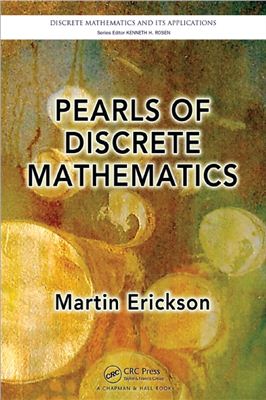CRC, 2009. - 280 pages.
Pearls of Discrete Mathematics presents methods for solving counting problems and other types of problems that involve discrete structures. Through intriguing examples, problems, theorems, and proofs, the book illustrates the relationship of these structures to algebra, geometry, number theory, and combinatorics.
Each chapter begins with a mathematical teaser to engage readers and includes a particularly surprising, stunning, elegant, or unusual result. The author covers the upward extension of Pascal’s triangle, a recurrence relation for powers of Fibonacci numbers, ways to make change for a million dollars, integer triangles, the period of Alcuin’s sequence, and Rook and Queen paths and the equivalent Nim and Wythoff’s Nim games. He also examines the probability of a perfect bridge hand, random touaments, a Fibonacci-like sequence of composite numbers, Shannon’s theorems of information theory, higher-dimensional tic-tac-toe, animal achievement and avoidance games, and an algorithm for solving Sudoku puzzles and polycube packing problems. Exercises ranging from easy to challenging are found in each chapter while hints and solutions are provided in an appendix.
Pearls of Discrete Mathematics presents methods for solving counting problems and other types of problems that involve discrete structures. Through intriguing examples, problems, theorems, and proofs, the book illustrates the relationship of these structures to algebra, geometry, number theory, and combinatorics.
Each chapter begins with a mathematical teaser to engage readers and includes a particularly surprising, stunning, elegant, or unusual result. The author covers the upward extension of Pascal’s triangle, a recurrence relation for powers of Fibonacci numbers, ways to make change for a million dollars, integer triangles, the period of Alcuin’s sequence, and Rook and Queen paths and the equivalent Nim and Wythoff’s Nim games. He also examines the probability of a perfect bridge hand, random touaments, a Fibonacci-like sequence of composite numbers, Shannon’s theorems of information theory, higher-dimensional tic-tac-toe, animal achievement and avoidance games, and an algorithm for solving Sudoku puzzles and polycube packing problems. Exercises ranging from easy to challenging are found in each chapter while hints and solutions are provided in an appendix.

